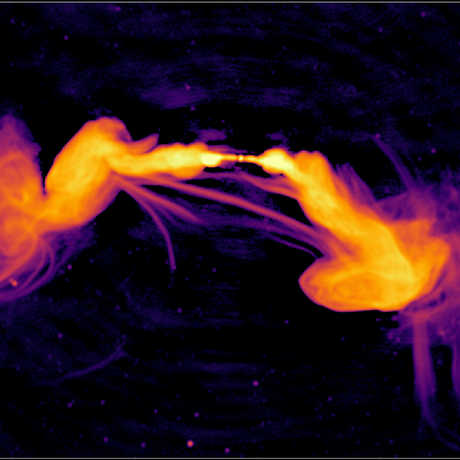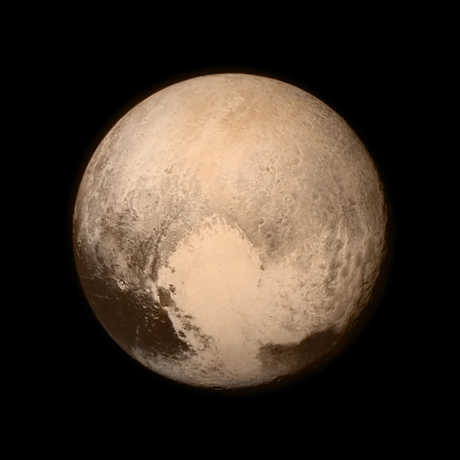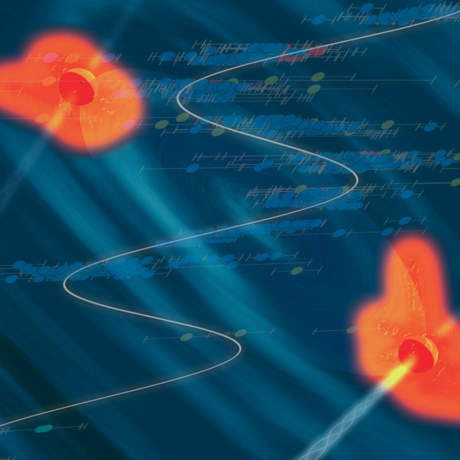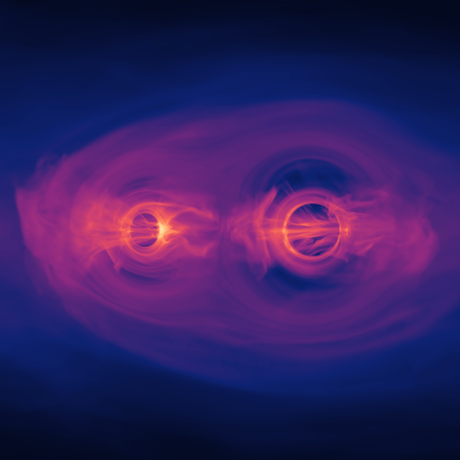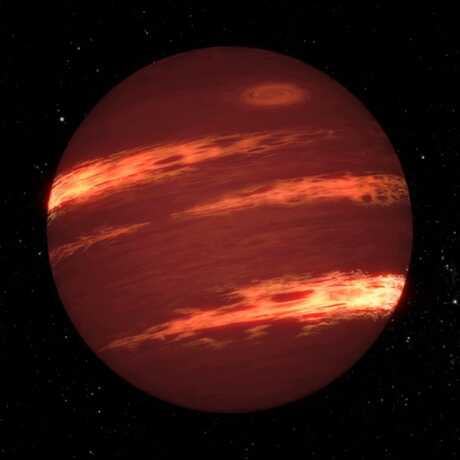Universe Update
Black Holes Big and Small—and In Between
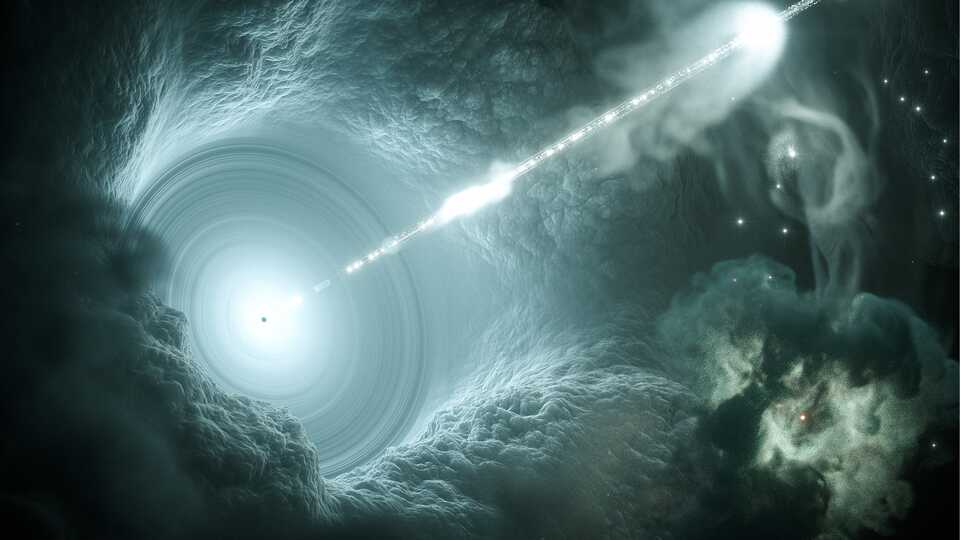
An artist’s impression of a supermassive black hole, the likes of which fuels extreme jets of material visible from millions of light years away. (Image courtesy DESY, Science Communication Lab.)
Who doesn’t love a good black hole story? Kinda like a ghost story, about something mysterious and far removed from everyday life…
The 239th meeting of the American Astronomical Society (AAS) was originally scheduled to take place this week in Salt Lake City, Utah. Unfortunately, for reasons anyone reading this in early 2022 can guess, the in-person meeting was canceled, but the AAS Press Office decided to move forward with a series of press conferences. That’s a bit of a relief for astronomy news junkies, because the winter AAS meeting is when NASA, along with many observatories and researchers announce their big findings, so it’s great to get the skinny on these subjects, even if the astronomical community isn’t gathering in person to share their work.
I guess AAS 239 disappeared into its own black hole of a sort…
Anyway, black holes were the subject of the two press conferences held today. Back when I was growing up in the late 1970s and early 1980s, stellar-sized black holes were hot topics of discussion, with much talk about supernova explosions and the warping of space-time. In the 1990s, especially as the Hubble Space Telescope and other projects began providing more evidence for their existence, supermassive black holes (which weigh in at millions to billions of times the mass of the Sun and inhabit the cores of most large galaxies) became popular subjects. And in the 2000s, we began hearing more about intermediate-mass black holes (with masses 100 to 100,000 times the mass of the Sun) lurking inside globular clusters and smaller galaxies.
A lot of mystery surrounds these objects because we don’t know all the details of how they form. Stellar mass black holes are, in the scheme of things, relatively easy to make—when an especially large star goes supernova, the end result is a stellar-mass black hole. Bang! No problem.
But intermediate-mass black holes? And supermassive black holes? It turns out to be trickier to describe their formation history.
Ryan Hickox from Dartmouth University outlined three formation scenarios: a cluster of stellar-mass black holes merging together, a single black hole accumulating mass through runaway collisions, and a direct collapse of material to form a big whoppin’ black hole in one go. Recently, the direct collapse scenario has become more strongly favored, because it more closely aligns with observations—except it would seem to be a rare event, whereas the resulting black holes are relatively common.
With JWST in the news, it’s easy to say we’ll wait for the brand shiny new telescope to solve the problem! But we don’t have to look back to the early history of the Universe to see black holes forming—we can check out dwarf galaxies relatively nearby! That’s what Hickox and his student did, using the Chandra X-Ray Observatory to look at eight dwarf galaxies. As he noted, these dwarf galaxies are “not entirely pristine,” but they offer an opportunity to see black holes close to home.
They found evidence for a black hole perhaps 200,000 times as massive as the Sun in the center of Mrk 462 (where “Mrk” indicates that it’s a Markarian galaxy, bright in energetic ultraviolet emission), heavily obscured by gas—gas that is likely feeding its growth. If you’ve been keeping track, the mass of the Mrk 462 black hole puts it right on the border between the intermediate and supermassive black hole regimes. That earned it the moniker “mini monster” in the press release announcing its discovery.
It shows up in X-rays because it’s growing, which makes it promising to teach us more about how even larger black holes take shape. (By the way, the estimate of its size at 200,000 times the mass of the Sun assumes that it’s growing at a rate typical of such objects—about 10% as fast as the maximum rate at which it could be accumulating matter. If it’s growing faster, it could have a mass as little as 20,000 times that of the Sun.) And there should be more objects like Mrk 462 awaiting discovery. “Because buried black holes are even harder to detect than exposed ones, finding this example might mean there are a lot more dwarf galaxies out there with similar black holes,” said Hickox. “This is important because it could help address a major question in astrophysics: How did black holes get so big so early in the Universe?”
Indeed, in a separate presentation, Mallory Molina at Montana State University described a new technique for finding supermassive black holes in dwarf galaxies. Their research combed through the spectra of tens of thousands of galaxies in search of a specific feature—and they identified 81 dwarf galaxies with supermassive black holes! As Molina noted, this is “a new population of black holes inaccessible with traditional methods,” and these objects place stronger constraints on the origins of supermassive black holes. “There are more black holes than meets the eye!”
So, once a supermassive black hole has formed and has taken shape inside the center of a galaxy, how can we learn more about it?
Vikram Ravi and Jean Somalwar, both from Caltech, described using the Very Large Array Sky Survey to search for tidal disruption events (TDEs), which occur when supermassive black holes devour unsuspecting stars or dense clouds of interstellar gas. (Talk about the set up for ghost story!)
In particular, they talked about their newly-discovered TDE, with the romantic name J1533+2727, which was actually observed back in the 1980s—but went unnoticed until two high-school students scoured archival data while interning for Ravi. Ginevra Zaccagnini and Jackson Codd compared radio observations taken decades apart and found that J1533+2727 appeared quite bright in the mid-1990s but had faded by 2017. Ravi then consulted data going back to 1986 and found that the object was 500 times brighter than today!
That’s pretty powerful! The conclusion is that a supermassive black hole gobbled up a star, expelling material at nearly the speed of light. Only three other TDEs associated with relativistic jets have been discovered, so this places J1533+2727 in a rarefied class. And although all this took place in the heart of a galaxy some 500 million light years away from us, seemingly spectacularly far away, it’s much closer than similar events that have been observed.
When asked if astronomers have “learned anything unexpected about newborn relativistic jets by observing radio TDEs,” Ravi responded, “There’s very little we expect… Any information is good information!”
Somalwar is going to spend part of her time as a graduate student at Caltech searching for more of these objects—both in radio wavelengths and in visible light. More good information for future understanding. And more black hole ghost stories at future conferences
